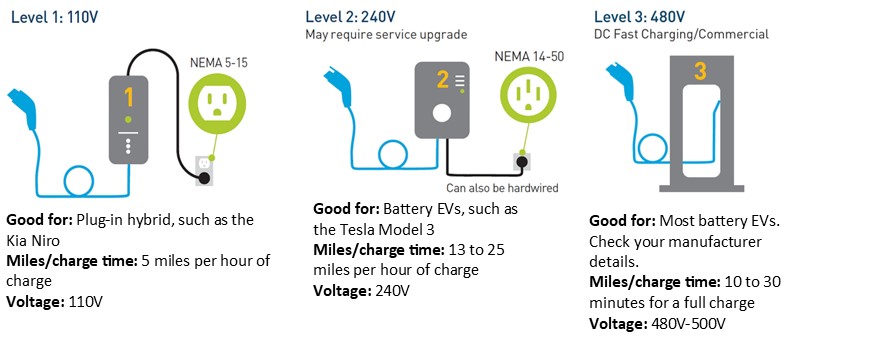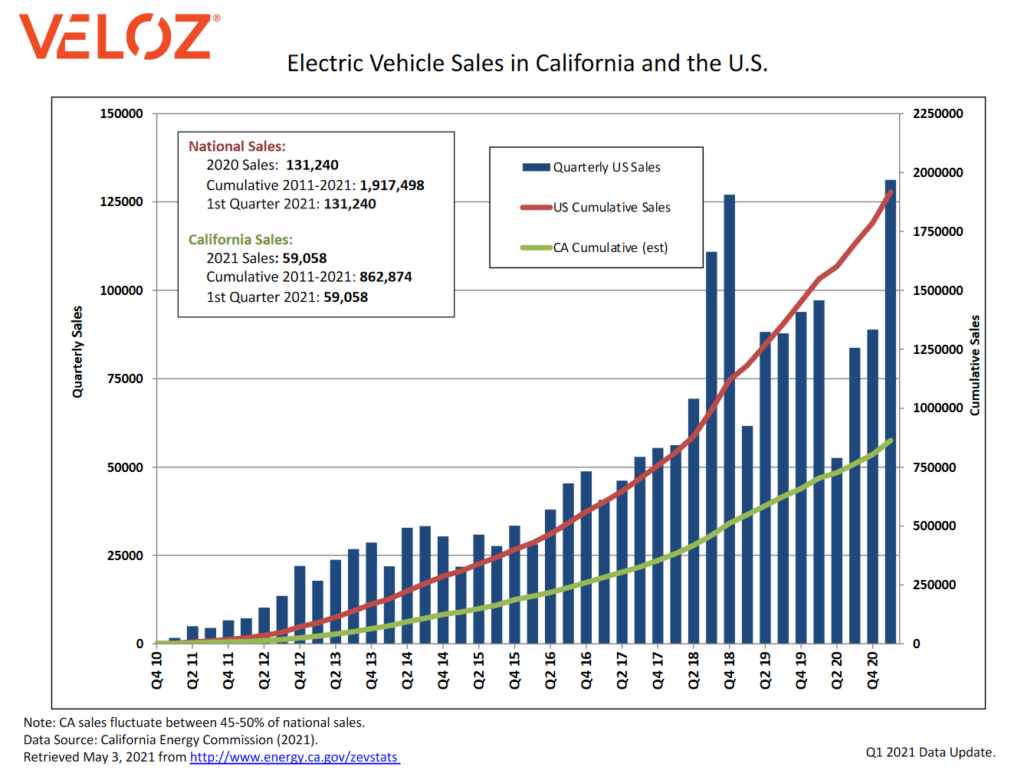There is no doubt that electric vehicles are becoming more mainstream. With a 2018 high of EV sales, a slight drop in 2019 (probably attributed to an influx of early adopters in 2018) and yet another drop in 2020 attributable to less commuting due to COVID-related shut downs, the data show increasing EV adoption. And with California prohibiting the sale of non-electric vehiciles by 2035, demand for charging stations is only going to become more prevalent. In 2020, EV sales were 8% of all car sales. California is the largest consumer of electric cars in the country, accounting for about half of all EV inventory.
As landlords, we need to adapt to serve our current and prospective tenants who are jumping on the EV bandwagon. Ninty-five percent of charging happens at home, so it is imperative that tenants have this option. We would not want to lose a tenant due to the abscence of an EV charging station, especially when EVs are going to become the norm in less than 15 years and our parking spaces will become redundant without them. Let’s adapt now to get ahead of other landlords to make our properties more attractive, as well as limit downtime for our vacancies, while introducing new income streams with EV charging parking spaces renting for more than a traditional space and a potential premium on the electricty used.
There are three types of chargers:
Level 1: Which plugs into a standard 110V outlet, which you may already have in your parking area. While the charging is slow, most tenants should be able to get enough charge for their daily commute if they charge over night.
Level 2: Which plugs into a standard 240V dryer outlet. This type of outlet may require an electric service upgrade in older buildings. This is the option I recommend installing if possible.
Level 3: These units are mainly found in commerical parking lots or garages of larger residential developments.

I recommend all properties have at least one charging space available at all times, or have a plan in place to quickly and efficiently install a charging station to attract a new tenant.
You can handle the payment for the cost of the space and electricity one of three ways:
- You can tie the charging unit into the house electrical meter and charge the tenant a premium for the spot and electrical use either via a flat monthly rate, or a metered charging station.
- You can tie the charging unit into the electrical meter for the tenant’s apartment.
- You can source to a third party to install the meter and charge the tenant for the usage.
I recommend the first option as it opens two income streams: one for the parking space, for which tenants will pay a premium with a charger installed, and one for the cost of the electrical, for which you can charge a premium.
While you may not be interested in adding EV charging stations at this time, you should be aware that AB 1796 requires that landlords approve written requests from tenants to install electric vehicle chargers at the tenant’s expense. So if a tenant makes a request to install a charging station, by law, you are mandated to allow them. While a tenant can source out a licensed electrician to do the work, I recommend installing the charger yourself through a trusted vendor and trying to open a second income stream with the increased rent and electrical fees.
While you may not see the attraction of an electric vehicle yourself, we can’t deny that the demand for charging stations is there and is going to increase rapidly in the coming years. Don’t get left behind.
We recommend REF Corp Electric for all your electrical needs including EV charger installation. You can reach them at https://refcorp.com/ or 415-362-0444.

